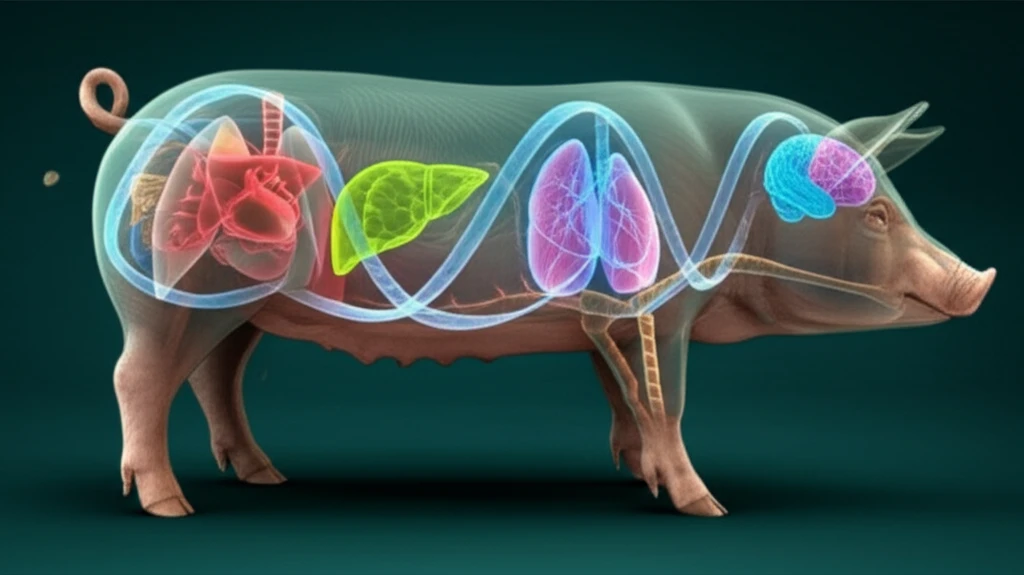
Decoding Pig Genetics: Why Understanding Imprinted Genes Matters
"Unlocking the secrets of Rasgrfl: How a single gene influences development and growth in domestic pigs."
Genomic imprinting is a fascinating process where certain genes are expressed differently depending on whether they are inherited from the mother or father. Unlike typical genes that follow Mendel's laws of inheritance, imprinted genes are epigenetically silenced in the offspring, escaping Mendelian genetics. In mammals, these genes play a vital role in regulating fetal growth, development, and even postnatal behavior. For animal breeders, understanding imprinting is increasingly important.
While most imprinted genes have been identified in humans and mice, relatively few have been found in livestock. The Ras protein-specific guanine nucleotide-releasing factor 1 (Rasgrfl) gene is one such gene. The Rasgrfl gene is involved in various crucial processes, from controlling postnatal growth and body size to influencing pancreatic function and glucose homeostasis.
This article explores recent research into the imprinting status of the Rasgrfl gene in domestic pigs. By identifying single nucleotide polymorphisms (SNPs) and analyzing gene expression in different tissues, scientists are uncovering the complex ways this gene influences pig development. This knowledge could potentially revolutionize breeding programs.
Unraveling Rasgrfl: A Genetic Deep Dive

The study focused on the Rasgrfl gene, which produces a 140-kD protein that regulates cell growth and differentiation. The Rasgrfl gene acts as a guanine-nucleotide exchange factor, activating the small G-proteins Ras and Rac. This activation occurs in a calcium-dependent manner and forms part of the MAPK signaling pathway, which is integral to cell communication and function.
- Identifying SNPs in the Rasgrfl gene.
- Analyzing gene expression in 14 different tissues (brain, heart, liver, etc.).
- Using reciprocal Berkshire x Wannan black F1 hybrid model to map the genes.
- Employing PCR/RFLP to detect imprinting status.
Why This Matters: Implications for the Future of Pig Breeding
This research demonstrates that the imprinting status of the Rasgrfl gene in domestic pigs differs significantly from that in mice and rats, showcasing species- and tissue-specific variations. These findings suggest that the Rasgrfl gene plays a complex role in pig development, with its expression influenced by both genetic and epigenetic factors.
Understanding these variations is critical for optimizing breeding strategies. By identifying animals with favorable Rasgrfl expression patterns, breeders can potentially enhance traits related to growth, body size, and metabolic function. This knowledge can be applied to marker-assisted selection and genomic selection breeding schemes, leading to more efficient and targeted improvements in pig livestock.
Further research is needed to fully elucidate the role of Rasgrfl imprinting at different developmental stages and in different pig breeds. Investigating the imprinting status of Rasgrfl around weaning is particularly important, as this is a critical period for growth and development. By continuing to unravel the complexities of pig genetics, we can unlock new opportunities for enhancing livestock production and ensuring a more sustainable future for animal agriculture.
